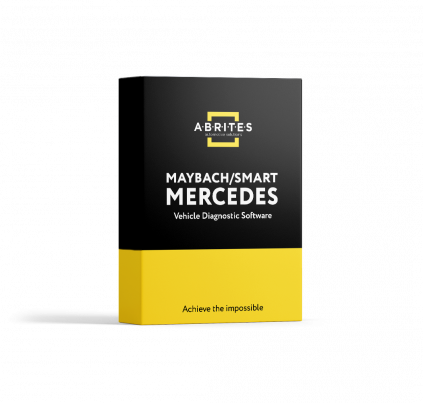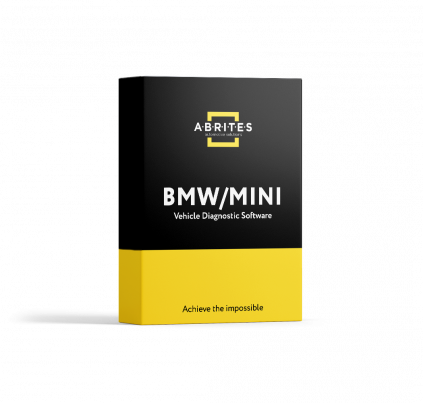
MERCEDES-BENZ CODING USING AVDI – FOCUS ON FAST CODING
This week I wanted to tell you about a function we have been developing slowly over the past two years or so. Namely, the SCN coding abilities of AVDI when talking about Mercedes.
The first thing I wanted to touch on is that the functionality is constantly being developed, it is still not perfect but the reality of the matter is that it is very involving and needs to be worked on constantly. The good part about this is that all customers with a valid AMS have access to the coding functionality in Mercedes for FREE which seems like a great deal to us.
Now that we have that out of the way, it is time to get specific. SCN coding is something very dear to us at Abrites because it provides that extra bit of control and customisation needed to all Mercedes specialists in order to do a better, more thorough job and make their end customers happier. Isn’t this the point of all our work together?
I. Safety
The Abrites version of the SCN coding is perhaps the safest coding you can get – once you read the module you are about to code, you can save the current coding configuration, this provides you with a safety net in case you get carried away with coding (we have all been there). This means that at any point, if you feel that you have gone a bit too far with coding or, in fact, if anything goes wrong, we can always go back to the beginning. This alone is one of the reasons I like most, because I have often found myself clicking too many buttons and I am sure I am not the only one.
II. Versatility
Another great side of our Mercedes coding is the versatility – you can code items in groups, you can select individual items, in some cases you can even see the co-dependencies between module groups in terms of coding, meaning that the software may advise you that another module needs to be coded too, in order for one function to apply.
- Renewal of AdBlue is something customers want a lot because they just forget and you know how modern Mercedes are, they simply and we basically have it as a button. So, you go to the car, click a button and the customer is extremely happy because they have effectively been rescued by you. What could be better?
III. What is new?
Well, I’m glad you asked. We have been hard at work constantly updating and ironing out the coding functionality because we were a bit late to the game, so to speak, and the latest developments are coding features we see requested more and more, so we took the time to get them right, set them as quick and easy, sometimes even single button clicks, so here are the latest updates:
CPC Torque limiter – The CPC or Common Power train Control Unit is yet another nanny in Mercedes’ enormous catalogue of modules. One of its functions is to limit the torque output of the ECU, so even if a tuner manages to achieve higher, more efficient toque curve figures, the ECU will still be hindered by the CPC. Not to worry – we have a solution – one of our new functions allows us to remove the limiter with a single click. That is extremely cool, but keep in mind it isn’t all. Mercedes, being Mercedes, never gave the CPC a custom value we can set. There are built-in limitations and the ability we have is to reach said limits. Here is an example:
Mercedes W206 C180. The car comes with a torque capacity of 250 N⋅m (184 lb⋅ft) at 1,800–4,000 rpm but a tuner can achieve 500 N⋅m of torque. Great! Not so fast, the CPC of this car in its factory form is set to a maximum of 300 N⋅m (just to be safe for overboost applications) and the maximum capacity the CPC can be unlocked to is 420 Nm, so the tune applied to the ECU must be created with that in mind, it will not be able to spread to its full potential. The ECU and CPC work together as a system, rather than as two separate units, so even though we have this functionality a lot of thinking, calculations and module information is required so do your homework first!
Speed limiter – the speed limiter is again managed by the same two modules and once again we need to have in mind that the CPC has pre-defined values for that too and we can reach the maximum so do not expect 330 km/h+ from the same C180 from the example above. Let us take the C217 C63 AMG as an example – the earlier version, equipped with a 5.5 litre twin turbocharged engine can reach a maximum speed of 310 km/h in “de-restricted” form while the facelifted model (4.0 litre twin turbocharged) is forced to make due with just 300 km/h. Both are a great improvement over the stock 251 km/h.
Exhaust flaps settings – this is another one of our cool single button settings, as most tuners know, turbocharged engines love additional flow, this function allows for said flow to be customised according to our needs. Constantly open flaps – sure, but also functional settings in regards to the vehicle’s specific tune. Versatility for days. Just make sure to remember that we are still playing within the factory confines of the predefined maximum settings of modules.
In conclusion, having coding functionality at your disposal is awesome, having free access to coding functionality is even better. Don’t forget that all of the above is made possible within the Abrites ecosystem – the almighty AVDI and active AMS.
Thank you for taking the time to read this week’s article and we will see you again in the next one.

 Personnalisation de TCU sans données FBS4
Personnalisation de TCU sans données FBS4
 Remplacement du BDC2 et Réinitialisation
Remplacement du BDC2 et Réinitialisation